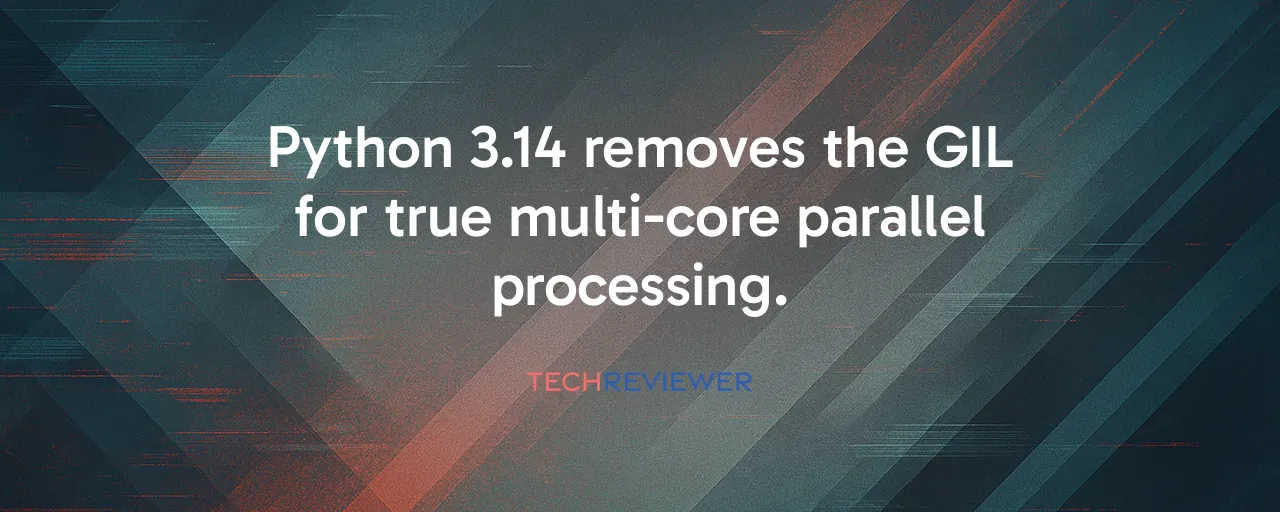Breaking the Single-Core Barrier
Python has long been a favorite for its clean syntax and versatility, but one nagging issue held it back: the Global Interpreter Lock, or GIL. This lock forced Python programs to run on a single CPU core, choking performance for tasks like data crunching or simulations. With the release of Python 3.14 on October 7, 2025, that bottleneck can now be bypassed. The new officially supported free-threaded execution mode lets Python tap into multi-core processors, enabling true parallel processing for CPU-heavy workloads when enabled.
For developers, this means a seismic shift. A benchmark running a parallel Fibonacci calculation clocked in at 279 milliseconds with free-threading, compared to 1377 milliseconds with the GIL-enabled version. That's nearly five times faster. Data scientists and machine learning engineers, who often wrestle with massive datasets, can now parallelize their code without jumping through hoops like multiprocessing, which adds memory overhead.
Real-World Wins: NumPy and Beyond
The impact of free-threading is already visible. Take NumPy, a cornerstone of scientific computing. Its developers rolled out free-threaded support for Linux and macOS, with Windows following shortly after. They tackled multithreaded scaling issues for array operations, enabling data scientists to process large datasets faster. One test showed NumPy's universal functions scaling smoothly across cores, a feat impossible with the GIL in place.
Meanwhile, the BeeWare project's work on Android support paid off. Python 3.14's official Android binaries, available since August 2025, streamline mobile app development. Developers can now build Android apps with Python's familiar syntax, cutting reliance on complex third-party tools. These case studies show how Python's new features are reshaping workflows, from research labs to mobile startups.
Smarter Strings for Safer Code
Beyond threading, Python 3.14 introduces template strings through PEP 750. These t-strings, which look like the familiar f-strings but use a 't' prefix, let developers process strings programmatically. For example, a SQL query built with t-strings can automatically parameterize values, slashing the risk of injection attacks. Web developers using Django or Flask can use these to generate safer HTML, keeping vulnerabilities at bay.
This feature surprised many, but it's a game-changer for security-conscious coding. By exposing string components before they're combined, t-strings allow custom processing, like escaping special characters or validating inputs. It's a practical step toward safer applications, especially for startups building web services or data pipelines.
Navigating the Trade-Offs
Free-threading isn't a silver bullet. Single-threaded performance takes a hit, with benchmarks showing an 11 to 30 percent slowdown for tasks that don't benefit from parallelism. Most Python apps, which lean on I/O operations like web requests, won't see gains and may feel this overhead. Extension modules also pose a hurdle. If a single extension lacks free-threading support, it forces the GIL back on, stalling parallelism across the app.
The experimental JIT compiler, included in macOS and Windows binaries, introduces performance complexity. Early tests show it often lags behind the standard interpreter, especially with modern compilers like Clang 20. Developers need to weigh these trade-offs carefully, testing their workloads to see if free-threading's benefits outweigh the costs.
A New Era for Python Developers
Python 3.14's changes signal a turning point. Web developers can handle CPU-heavy API endpoints more efficiently, while mobile developers gain a smoother path to Android apps. The scientific computing community, from NumPy to SciPy, is already adapting, with nightly builds showing progress. But challenges remain, especially for package maintainers who must update C extensions for thread safety, a task that doubles their testing burden.
Looking ahead, the Python Steering Council plans to make free-threading the default in future releases, likely Python 3.15 or 3.16, once ecosystem support catches up. For now, developers have a choice: stick with the familiar GIL or embrace parallelism for a performance edge. Either way, Python's evolution is opening doors to faster, safer, and more versatile applications.
